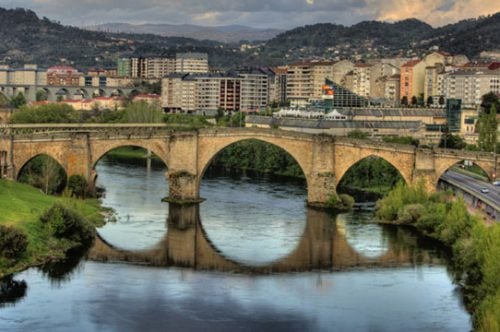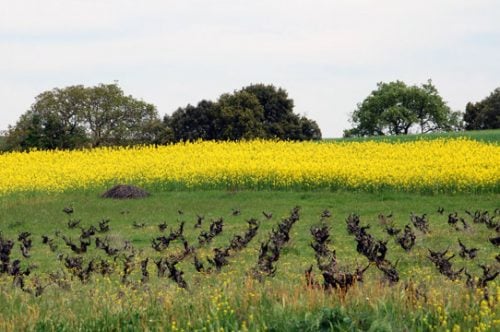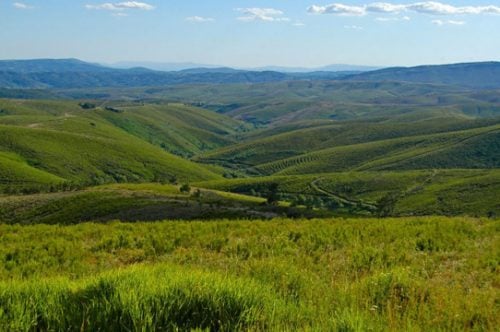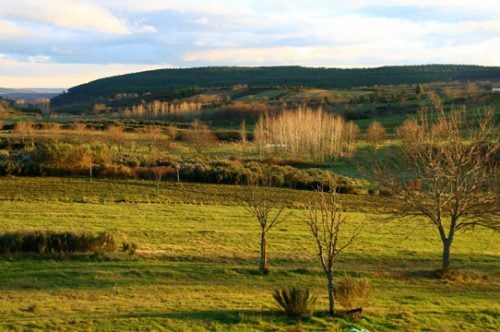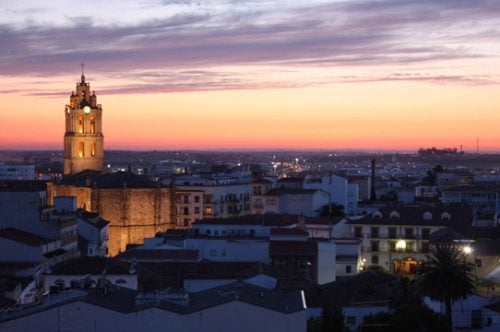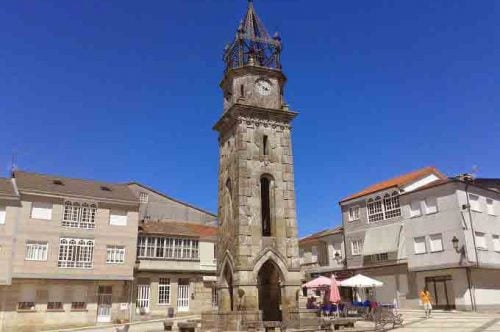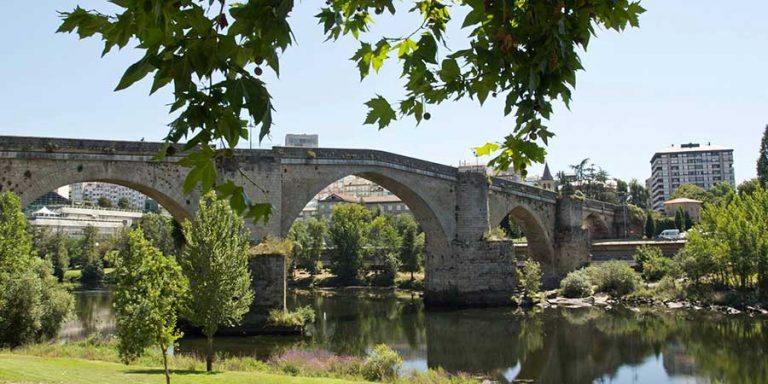The Via de la Plata
The Vía de la Plata, also known as the Camino Mozárabe, is the longest of all the Camino de Santiago routes, stretching over 1,000 km from Seville in southern Spain to Santiago de Compostela in the north.
Originally a Roman trade route connecting the cities of Mérida, Salamanca, and Astorga, the Vía de la Plata later became a pilgrimage path during Moorish rule, used by North African and Andalusian Christians making their way to the shrine of Saint James in Santiago de Compostela. Its name, meaning “Silver Route”, comes not from silver itself, but from the Arabic word balata, meaning paved stone — a nod to its ancient Roman origins.
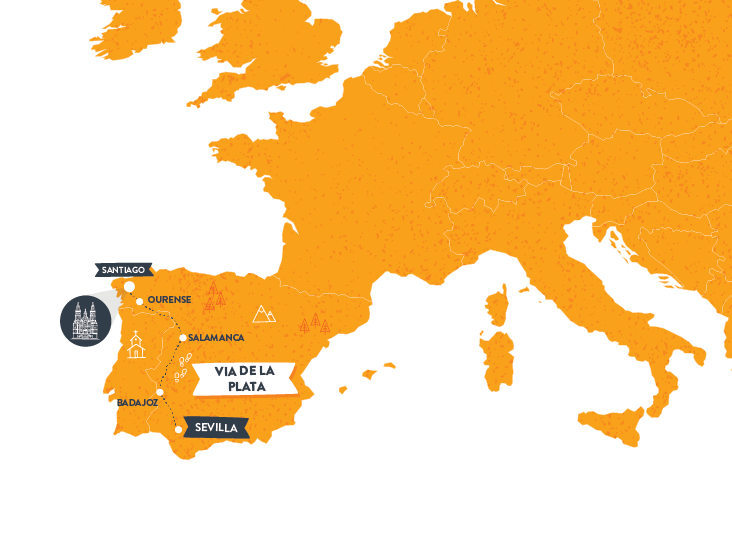
Walking the Vía de la Plata today feels like stepping back through history. Pilgrims follow the same Roman milestones and roads once used to transport gold and copper from the mines of Las Médulas and Río Tinto, passing through a landscape rich with archaeological remains, Moorish influences, and rural tranquillity.
This Camino offers a journey through some of Spain’s most varied regions — from the sun-soaked plains of Andalusia and Extremadura to the green hills of Galicia. The final 100 km from Ourense to Santiago is the most popular section for modern pilgrims, combining spectacular mountain views, rolling countryside, and the chance to earn the Compostela certificate.
Despite its beauty and cultural depth, the Vía de la Plata remains one of the least crowded Caminos, making it ideal for those seeking a quiet, authentic pilgrimage. Along the way, you’ll encounter welcoming locals, savour traditional cuisine, and immerse yourself in the true heart of Spain.
Why Walk the Via de la Plata?
- Cultural blend – Roman, Moorish, and medieval Christian influences.
- Less crowded – a quieter, more contemplative Camino.
- Galician finale – spectacular last 100 km from Ourense into Santiago.
This route is perfect for pilgrims seeking an authentic adventure away from the busier Caminos.
Our itinerary highlights the most beautiful section of the Via de la Plata in Galicia. To earn your Compostela certificate, you’ll need to walk the final 100 km from Ourense. These last stages are renowned for their stunning scenery and diverse landscapes and are considered the most spectacular of all the Camino routes. As you journey from Ourense to Santiago, you’ll be treated to breathtaking mountain views and rolling hills, making this section truly unforgettable.
The Via de la Plata is highly recommended for those seeking an authentic Camino experience. Despite its rich history and breathtaking beauty, it remains less well-known than other popular routes, offering a unique opportunity to immerse yourself in true Galician culture. Along this hidden gem, you’ll have the chance to interact with locals, savour traditional dishes, and marvel at the untouched natural landscapes, making your journey truly memorable.
Suggested Routes
Highlights of The Via de la Plata
- Challenge yourself in the breathtaking Serra Seca mountains.
- Discover the unique local heritage, including Hórreos, which has been used as a granary for centuries.
- Walk through the serene hills of rural Galicia, starting from Ourense.
- Savour the refreshing and flavourful Monterrei and Ribeiro wines.
- Celebrate your accomplishment and receive your Compostela at Santiago de Compostela’s Cathedral.
Camino Ways Route Planner
For over 1000 years, pilgrims from all over the world have walked the Camino Ways across Europe in their quest for spirituality. Making the pilgrimage to Santiago de Compostela in Spain, they encountered a variety of people, cultures and beliefs, leading to friendship and new experiences. This continues today with the Camino de Santiago being the most well-known and well-loved walk in the world. More than just a walk, the Camino de Santiago is an unforgettable and unique journey for the body, mind and soul.
Compostela Certificate
To earn your Compostela:
- Walk at least the last 100 km of the Via de la Plata (starting in Ourense).
- Cycle at least 200 km (from further south).
👉 Full details in our Compostela Certificate Guide.
When to Go on the Via de la Plata
- Spring & autumn – best times, mild weather, vibrant landscapes.
- Summer – very hot in the south (Seville to Salamanca).
- Winter – quiet, but many hotels close. Autumn is also popular with birdwatchers.
👉 Compare with our Best Time to Walk the Camino.
Terrain
- Final 100 km (Ourense–Santiago) – gentler terrain, rolling hills, lush Galicia.
- No major ascents in the last stretch, making it manageable for most walkers.
👉 Get ready with our Camino Fitness Plan.
What To Bring On The Via de la Plata?
Our Camino packing guide ebook is free to download. This will help you decide what to bring on your Camino.
Essentials include:
- Light clothing for hot southern stretches.
- Rain gear for Galicia.
- Comfortable shoes for long, flat stages.
History of the Via de la Plata
- Roman era – trade road moving copper & gold from Rio Tinto and Las Médulas.
- Arabic influence – name comes from Bal’latta, meaning “paved road.”
- 997 AD – Moorish general Almanzor marched along it to raid Santiago.
- Medieval period – Mozarabic Christians from Andalusia revived the route.
- 13th century onwards – safer under Ferdinand III; Andalusian pilgrims returned.
- Military orders – Knights of Saint James, Templars, and Hospitallers protected bridges, monasteries, and hospitals along the way.
The Via de la Plata offered pilgrims multiple branches:
- Towards Astorga to join the Camino Francés.
- Via Verín or Laza, converging in Ourense.
- Through Portugal (Bragança/Chaves) into Galicia.
👉 Read more in our History of the Camino.
Camino Made Easy
With CaminoWays, your Via de la Plata includes:
- Selected accommodation.
- Daily luggage transfers.
- 24/7 support, walking notes & maps.
👉 Browse Guided Tours or Self-Guided Tours.
FAQs
Q: What is the Via de la Plata Camino?
A: The Via de la Plata, also called the Camino Mozárabe, is Spain’s longest Camino route at over 1000 km, following an ancient Roman road. Learn more in our Camino history guide.
Q: How long does the Via de la Plata take to walk?
A: Walking the full Via de la Plata can take 6–8 weeks. Many pilgrims choose the last 100 km from Ourense to Santiago, which takes about a week. See our Camino stages overview.
Q: Can I get a Compostela on the Via de la Plata?
A: Yes. To qualify for the Compostela certificate, you must walk at least the last 100 km from Ourense or cycle 200 km. Read more in our Compostela guide.
Q: What are the highlights of the Via de la Plata?
A: Highlights include Roman remains, the mountains of Galicia, Monterrei and Ribeiro wines, and Santiago Cathedral. Visit our Camino highlights page.
Q: When is the best time to walk the Via de la Plata?
A: Spring and autumn are ideal for mild weather. Summers can be very hot in southern Spain, while winters are quiet but some services may be closed. Compare with our best time to walk the Camino guide.
Q: What should I pack for the Via de la Plata?
A: Pack light layers, good walking shoes, and rain protection. Download our free Camino packing list for full details.
Closing Thought
The Via de la Plata is the Camino of distance, history, and endurance — a journey along Roman roads, through Moorish towns, and across Galician hills. For those ready for a challenge, it’s the ultimate way to Santiago.
👉 Ready to walk the Roman Road Camino? Plan your trip with our Award-Winning Camino Planner.
